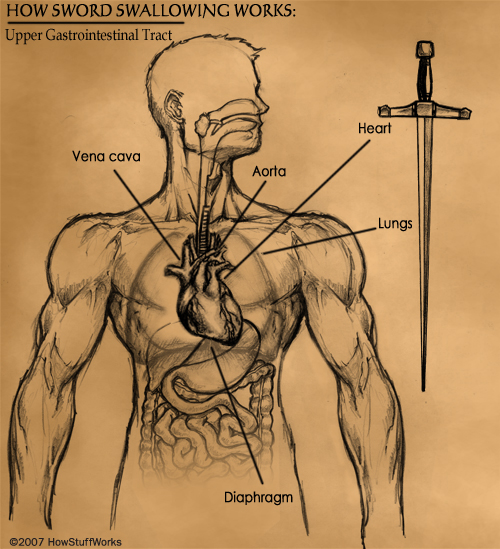The “human ostrich,” an inversion of the hunger artist, was a fixture of 19th-century dime museums who would down dimes, sure, but also all manner of metal, from pins to nails to cutlery. But there’s no such thing as a free lunch, and sooner or later the result was stomach surgery for the performer. Such was the case with John Fasel, who found himself atop a surgeon’s table in 1900. From an article about his daring diet and its consequences in the January 14, 1900 New York Times (which referred to him erroneously as “Sasel”):
“John Sasel, twenty-two years old, applied for admission to the St. John’s Hospital, Brooklyn, Thursday. At 4 o’clock yesterday afternoon an operation was performed on the man, and among the other junk the following articles were removed from his stomach:
Two nickel watch chains and one brass chain, two latch keys, six hairpins, 128 common pins, ten two and one-half inch iron nails, two horseshoe nails, and one finger ring, set with a stone. The doctors say that there still remain to be removed eight or more horseshoe nails, the pendant of a gas lamp, and several other articles. The man was said last night to be doing well and to have excellent chance of a recovery.
Sasel had been employed as ‘the man with the ostrich stomach’ at a dime museum in this borough for the last fourteen months. He told the doctors that such articles had been his daily diet during that time, and that he had thrived upon them until Dec. 16 when after swallowing 320 pins, he felt pains in his stomach. These continued until last Wednesday, when he went to a doctor. He then took an emetic, which brought forth a steel watch chain twelve inches long twelve inches long. The doctor advised him to go to a hospital.
At St. John’s Hospital an X ray phtograph was taken Friday afternoon. His stomach was seen to be a veritable junk shop, and the operation was determined upon. Dr. George G. Hopkins, chief operating surgeon at the hospital, performed the operation.”

